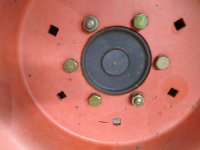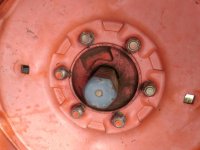Coyote machine
Super Member
- Joined
- May 4, 2009
- Messages
- 7,663
- Location
- Southern VT
- Tractor
- 22 SANY SY 50U, '10 Kioti DK 40se/hst KL-401 FEL, loaded tires, KB-2485 bhoe, Tuffline TB160 BB, Woods QA forks, MIE Hydraulic bhoe thumb & ripper tooth, Igland 4001 winch, & GR-20 Log Grapple. Woods BBX72" Brush Mower. Diamondplate aluminum canopy
So it seems, from the last number of posts, what I posed earlier might in fact be the answer to why the hole elongation occurred, and why this tractor belonging to the OP has this not unique issue. Reiterating what I posed earlier. Whoever installed the wheel/time combo on this single Kubota tractor might not have tightened the wheel to the axle(s) correctly, or tight enough, or followed standard practice of tightening in a sequence rather than one then next in a circle, etc.
And, followed, possibly by no re-torque soon enough after sale to correct and properly secure the wheels to the axle hubs, could have resulted in the end result being established with loose nuts or studs and thus elongation.
Kubota's design of captive lock, no flat may work IF applied as intended, and proper and timely re-torquing following as required for 99% of these tractors, but add human error and some are bound to end up as the OP's has. No blame intended here, merely a plausible explanation as to how this tractor ended up with this problem.
And, followed, possibly by no re-torque soon enough after sale to correct and properly secure the wheels to the axle hubs, could have resulted in the end result being established with loose nuts or studs and thus elongation.
Kubota's design of captive lock, no flat may work IF applied as intended, and proper and timely re-torquing following as required for 99% of these tractors, but add human error and some are bound to end up as the OP's has. No blame intended here, merely a plausible explanation as to how this tractor ended up with this problem.


